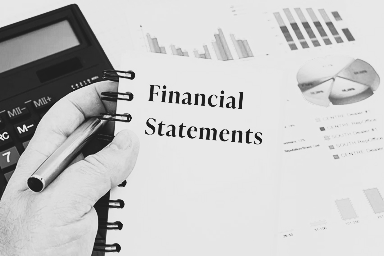Understanding your business‘s financial statements is essential for making informed decisions and ensuring the long-term success of your company. These statements provide valuable insights into your business’s financial health, including profitability, liquidity, and solvency. In this article, we’ll look at the three primary financial statements: the income statement, balance sheet, and cash flow statement.
Income Statement
The income statement, also known as the profit and loss statement, summarizes your business’s revenue, expenses, and net income over a specific period, typically a month, quarter, or year. This statement is essential for assessing your business’s profitability and identifying areas where you can cut costs and increase revenue.
The income statement includes the following components:
Revenue: This is the total amount of money your business earned from selling products or services.
Cost of Goods Sold (COGS): This includes the direct costs of producing or delivering your products or services, such as materials, labor, and shipping.
Gross Profit: This is the difference between revenue and COGS and represents the money your business earned after accounting for direct costs.
Operating Expenses: These are the indirect costs of running your business, such as rent, utilities, salaries, and marketing.
Operating Income: This is the difference between gross profit and operating expenses and represents the money your business earned before accounting for taxes and interest.
Net Income: This is the final line on the income statement and represents the money your business earned after accounting for all expenses, taxes, and interest.
Balance Sheet
The balance sheet provides a snapshot of your business’s financial position at a specific time. It includes your business’s assets, liabilities, and equity. This statement is essential for assessing your business’s liquidity and solvency and understanding how much money you can invest in your industry.
The balance sheet includes the following components:
Assets: These are the resources your business owns or controls, such as cash, inventory, equipment, and property.
Liabilities: These are the obligations your business owes to others, such as loans, accounts payable, and taxes.
Equity: This represents the residual value of your business after accounting for assets and liabilities and includes owner’s equity and retained earnings.
The balance sheet follows the accounting equation: Assets = Liabilities + Equity. This equation ensures that the total value of your business’s assets equals the full value of its liabilities and equity.
Cash Flow Statement
The cash flow statement tracks the inflow and outflow of cash in your business over a specific period, typically a month, quarter, or year. This statement is essential for assessing your business’s liquidity and understanding how much cash you have available to pay bills, invest in your business, and distribute to owners.
The cash flow statement includes the following components:
Operating Cash Flow: This represents the cash your business generates from its core operations, such as sales and customer collections.
Investing Cash Flow: This represents the cash your business spends on investments, such as equipment, property, and securities.
Financing Cash Flow: This represents the cash your business raises or spends on financing activities, such as borrowing, issuing equity, or paying dividends.
Net Cash Flow: This is the difference between inflows and outflows of cash and represents the change in your business’s cash balance over the period.
Conclusion
Understanding your business’s financial statements is critical for making informed decisions and ensuring the long-term success of your company. By analyzing these statements, you can assess your business’s profitability, liquidity, and solvency and identify areas where you can cut costs and increase revenue. If you need more time analyzing financial statements, consider hiring a qualified accountant or financial.
Who we are: Funded.com is a platform that is A+ BBB rated over 10+ years. Access our network of Investors, get instantly matched with a Lender, or get a business plan by visiting us Funded.com
You can review our featured partners to help your success with your business or project.




 Rss Feed
Rss Feed


